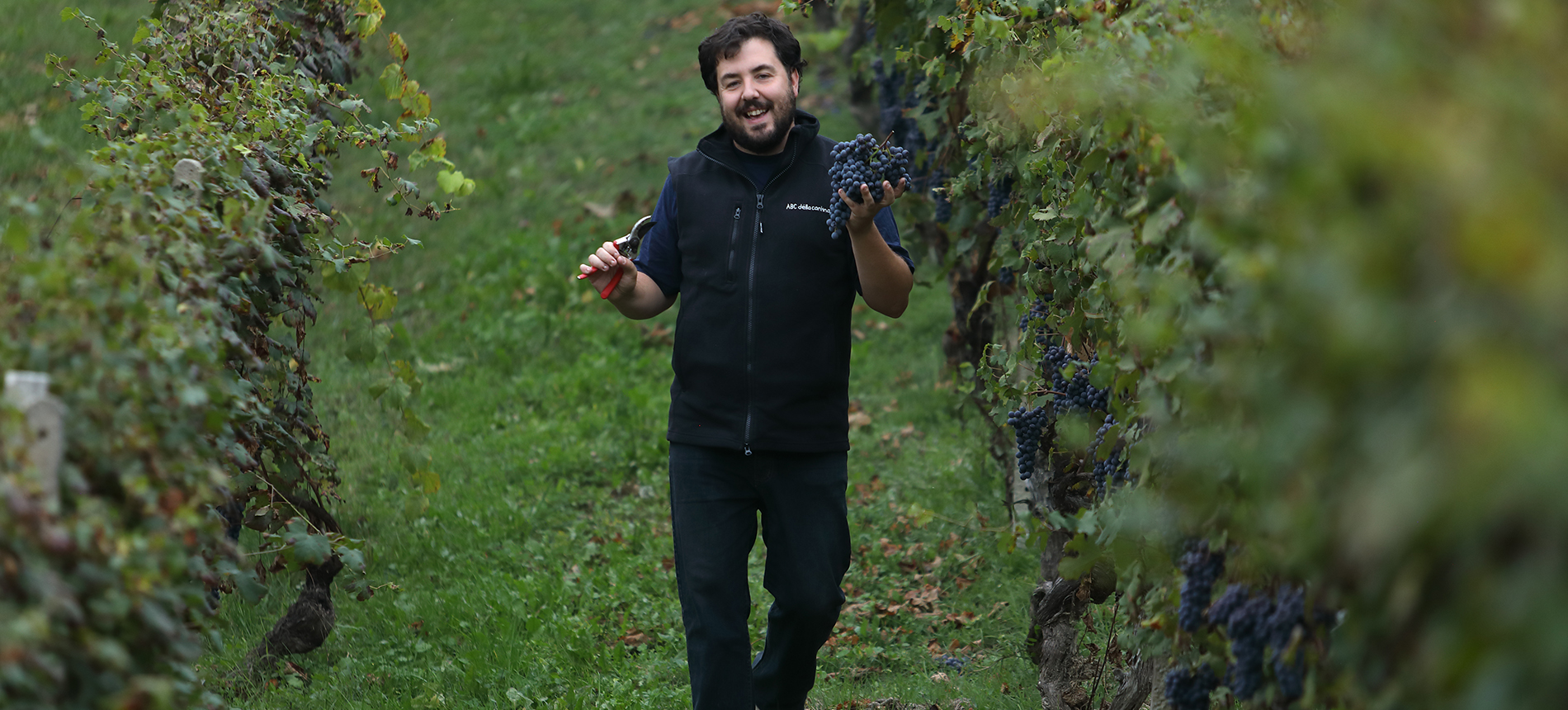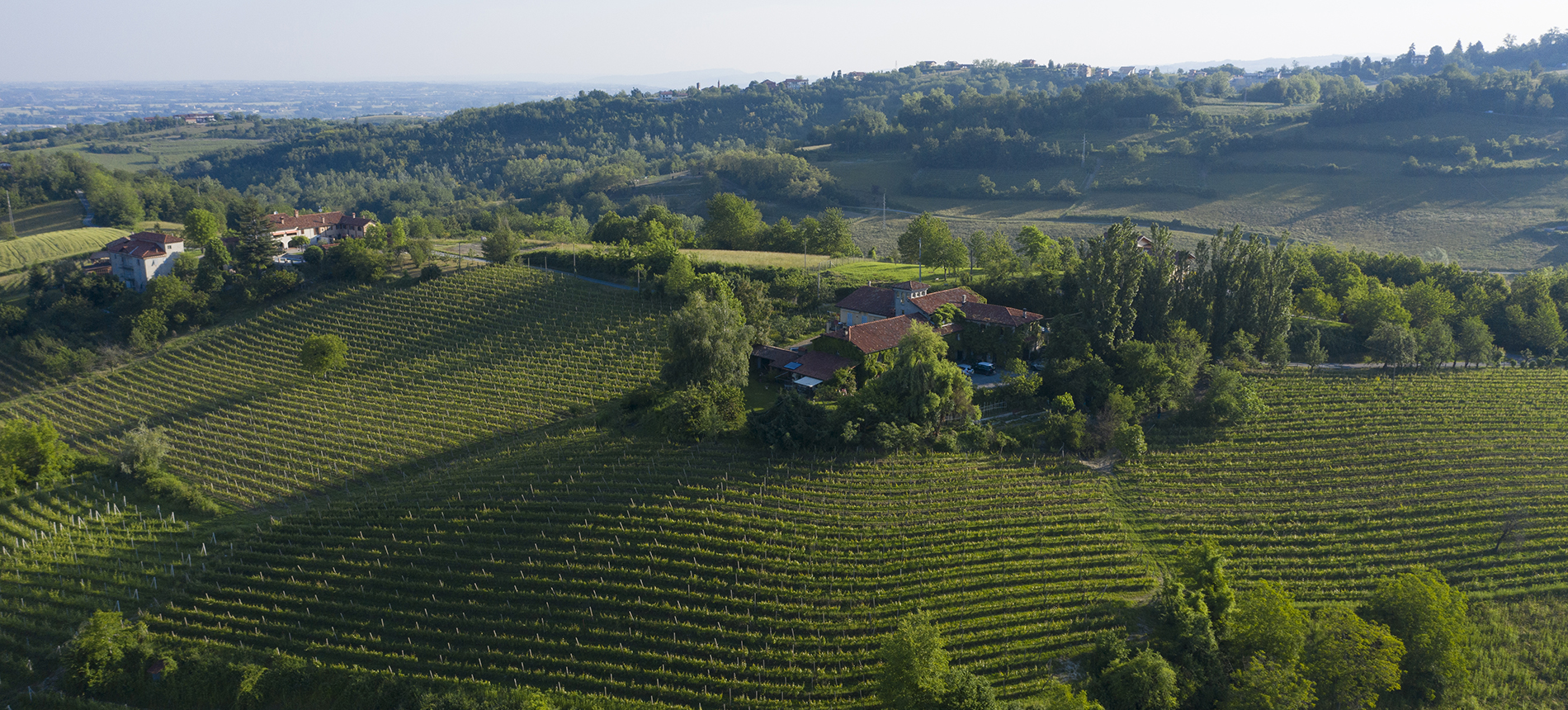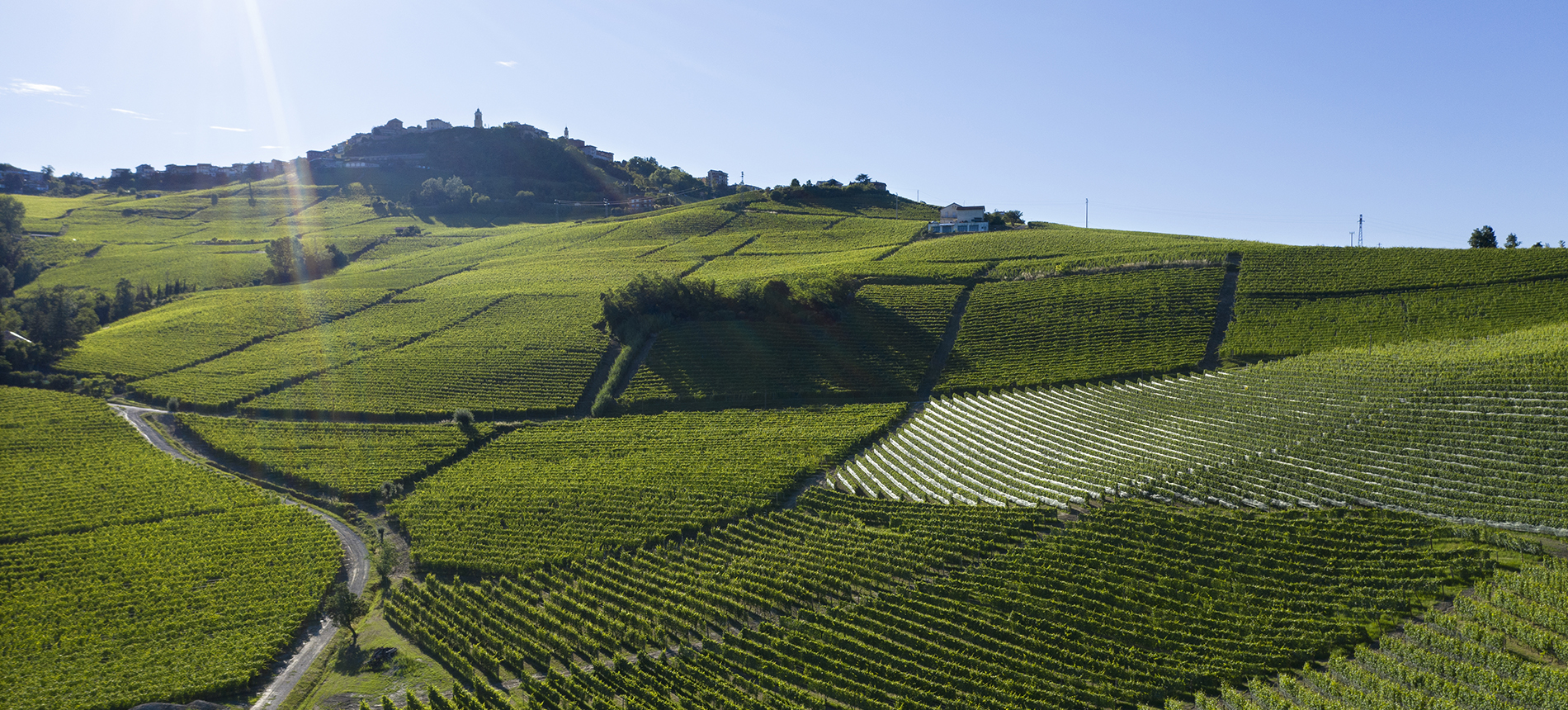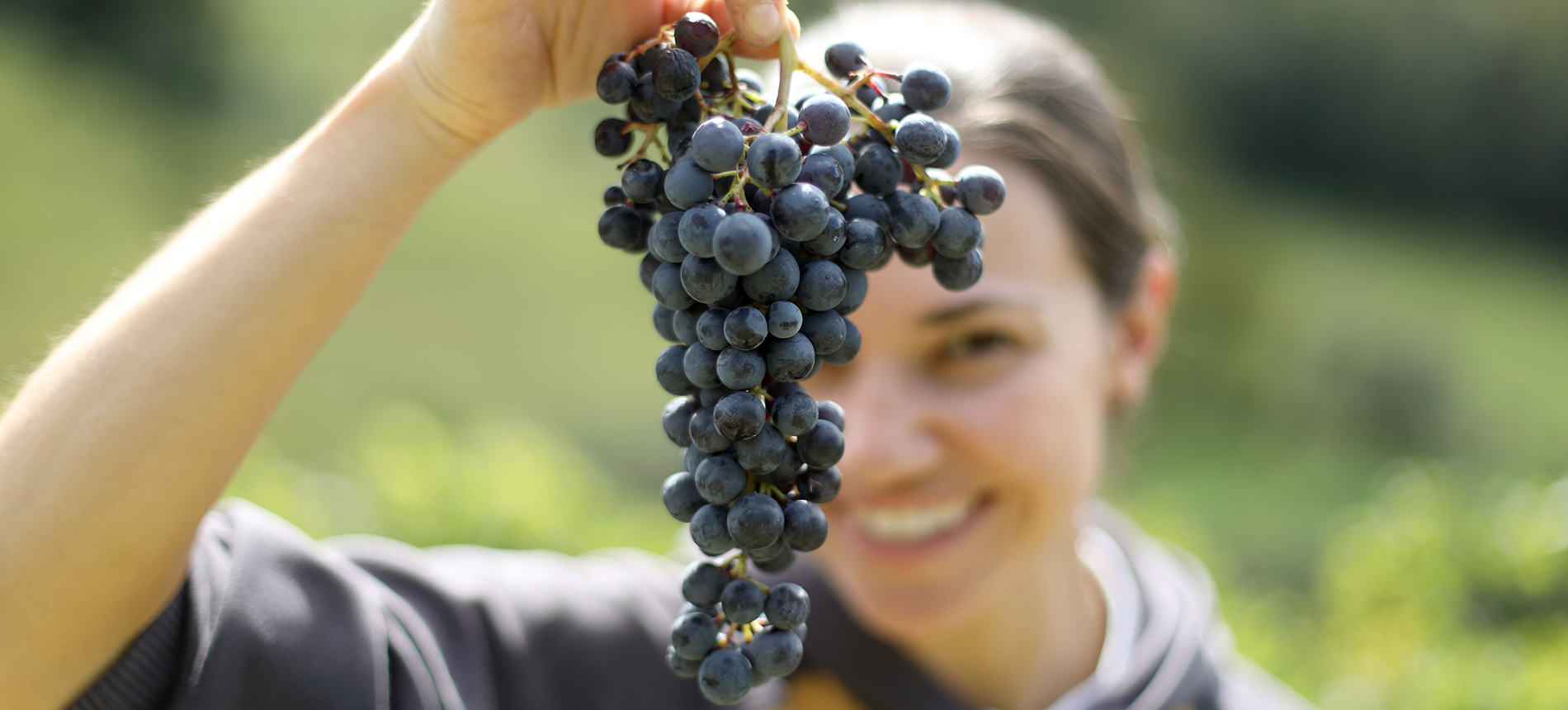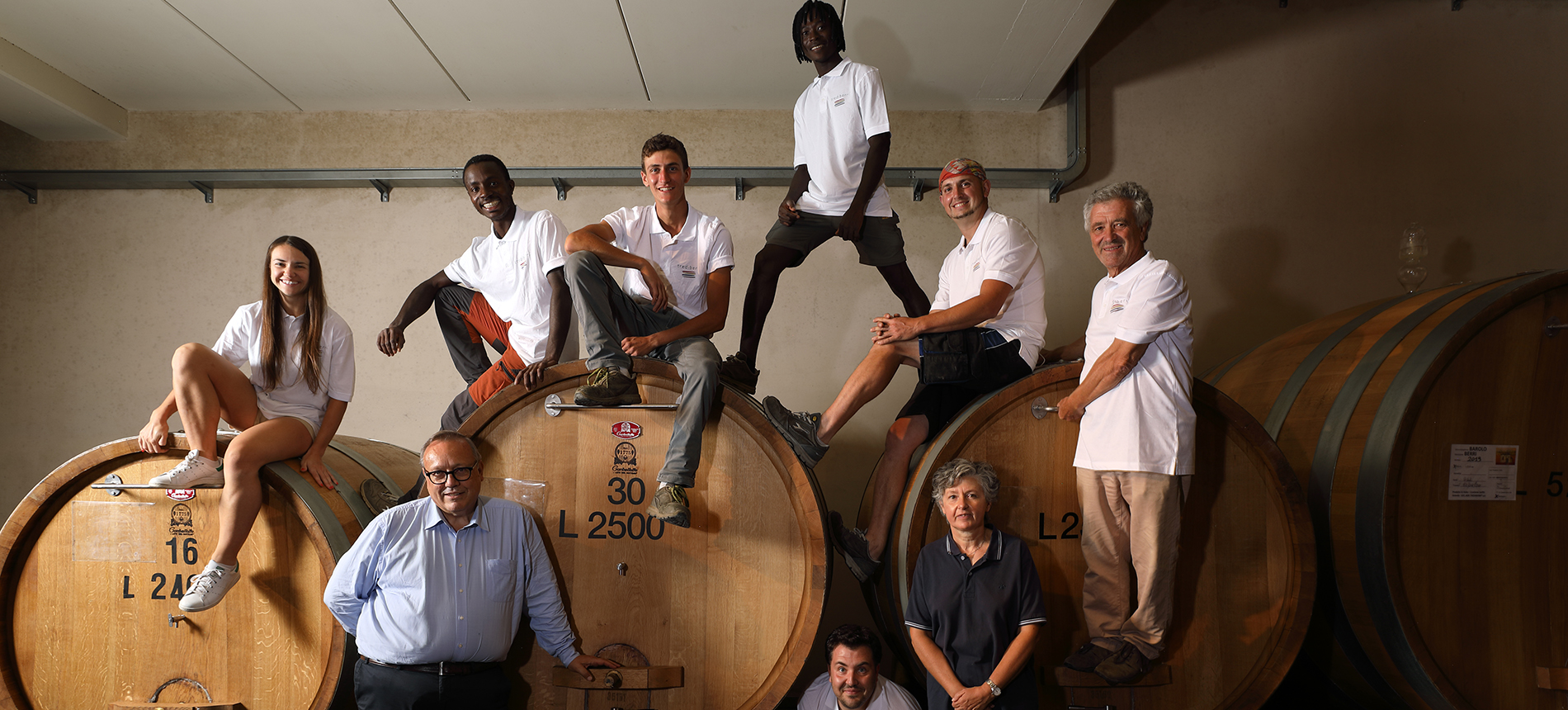In a region like Barolo, steeped in tradition and history, it is rare to find a newcomer who has burst onto the international Piedmont scene like Trediberri has. The winery was started only recently, in 2007, when its three partners, Nicola Oberto, Federico Oberto and Vladimiro Rambaldi purchased a 5 HA plot of vineyard in the Cru of Berri which is located on the extreme western edge of La Morra in the Barolo Zone. Their first commercial vintage, in fact, was 2011.
The name “Trediberri”, meaning “three from Berri”, is a tribute to the three partners in the project. Nicolà Oberto (along with his life partner, Stefania Drocco) is the face and the dynamic driving force behind the project. He is a young, energetic, passionate, and wine-loving producer with a deep knowledge of the world of great wine, which in turn informs his approach in everything he does in the cellar and vineyards. Nicola’s father, Federico, brings the wisdom of the ages from his many years working as a cellar master at the famed Renato Ratti winery in La Morra, starting in the 1970’s until his “retirement” there in 2005. Federico was also able to contribute the family holdings, 2.8 HA in the famed Crus of Rocche dell’Annunziata and Torriglione. The third partner, Vladimiro Rambaldi, who splits his time between running a bank and helping to direct and guide the financial well-being of the winery, is also immersed in a life and love of wine.
But back to the story of Berri. The Cru of Berri has a long history of producing Nebbiolo, though it was largely abandoned after World War II when the inhabitants of this tiny commune apparently left to taken easier and more lucrative jobs in the cities. But the trio saw its potential with its optimum elevation and exposition, a relatively cool, river-influenced microclimate, and an ideal soil profile including pebble-strewn clay with bands of sandstone over a base of a limestone bedrock. The Berri forms the base of their Barolo bottling, coupled with a small proportion of highly elegant and perfumed Torriglione which adds a distinct element of complexity to the blend. The crown jewel, of course, is their Rocche dell’Annunziata bottling, one of La Morra’s most famous crus and one which Nicolà compares to the renowned Chambolle 1er Cru “Les Amoureuses” in Burgundy.
The Baroli are produced using a classical Piedmontese regimen including a relatively long maceration on the skins of 3 weeks or more in concrete, followed by two years aging in large botti grandi. That said, they are quick to add that “there are no recipes”, and the macerations and aging regimen can vary according to the vintage. Some vintages even include some stem inclusion to add some complexity and energy to the wines. Fortunately, the winery is equipped with a full array of equipment and tanks (concrete, stainless steel and wood) to ensure that the journey from vineyard to bottle is accomplished with the utmost care and attention.
Nonetheless, the Trediberri story is about much more than Barolo. Nicolà and Co. are clearly equally dedicated when it comes to the rest of the range, and endeavor for people to feel as passionate about their Dolcetto, Barbera, and Nebbiolo as they do about their Baroli! Here too, it starts with great vineyard sites, some owned, some rented and/or farmed. The Dogliani DOCG Dolcetto is from 600-meter, old vine parcel in Bastia Mondovì and Cigliè. The Barbera D’Alba comes from their holdings in Torriglione and from Roero. And the Langhe Nebbiolo comes from both young vine, de-classified Barolo plus some grapes from high-altitude vineyards in the Alta Langa, a sector which is becoming more and more interesting in this age of global warming! These wines are all generally aged in tank to show off their purity and depth, without any extraneous make-up from oak or other influences.
In the end, Trediberri is ultimately about making wines that appeal to the most passionate segment of the drinking public, those who look to drink great wines, and not just fancy and famous labels. On their website, there is a section called, “Our idea of Wine”. In it, they talk about the old adage that, in a table full of great wines, the one that is “best” is not always the most famous one, but rather, the bottle that is finished first! And alas, they endeavor to produce that kind of wine. As they say, the best wine “is always the most balanced [and] the one in which all components talk to each other in the most complete way”. We couldn’t agree more! We are excited to share these great wines with you, our most passionate Piedmont consumers.
